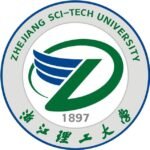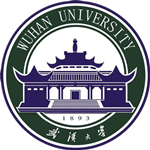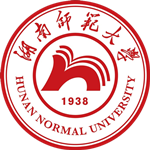University Description
Zhejiang Sci-Tech University (ZSTU) is located in Hangzhou, a historical and cultural city, boasts a long history of schooling and covers a campus area of over 2100mu.
Silkworm School, precursor of ZSTU, was founded in 1897 by Lin Qi, governor of Hangzhou prefecture then, with the noble ambition to save the nation by engaging in industry and education, and was one of the earliest new-learning educational institutions ever founded in China. In 1908, Silkworm School was imperialistically promoted by the royal court of the Qing Dynasty to be Advanced Academy of Sericulture and Mulberry owing to its outstanding schooling achievements. The period of turmoil and chaos, from the Revolution of 1911 until the founding of the People’s Republic of China, witnessed the changes of the names and locations of the institution for several times. However, no matter what hardships it underwent, it never gave up its commitment to schooling. After the founding of the PRC in 1949, the academic institution kept forging ahead and composed grand new chapters of its history. In 1959, it began its enrollment of undergraduate candidates. In 1964, the State Council named it Zhejiang Silk Engineering College. In 1979, it started to offer postgraduate programs and was authorized to confer master’s degrees in 1983. With the approval of MOE, it was named Zhejiang Engineering College in 1999 and Zhejiang Sci-Tech University in 2004. In 2006, ZSTU began to have the authority to confer doctoral degrees. In 2010, with the approval of MOE, ZSTU began to be qualified to recommend excellent fresh undergraduates to take master’s degree programs free of examination. In 2017, ZSTU was listed among the Zhejiang Provincial Key Construction Higher Educational Institutions.
ZSTU now is a provincial university focusing on engineering, with distinct characteristics and advantages as well as the coordinated development of the various disciplines of sciences, engineering, arts, economics, management, law, fine art, education, etc. ZSTU consists of 18 affiliated schools or colleges (teaching and research departments) and 1 independent college, with a population of over 29200 full-time on-campus students, and among whom 4460 are graduate students. At present, ZSTU offers 67 undergraduate programs of which 8 are the national (MOE) characteristic programs, 1 MOE comprehensive reform trail program, MOE “Outstanding Engineer Education and Cultivation Project” trial programs, 3 “MOE-Autodesk Professional Comprehensive Reform Programs”, 7 “13th five-year” provincially advantageous programs and provincially characteristic programs. ZSTU boasts 2 doctoral degree first-level disciplines (including 12 doctoral degree second-level disciplines), 17 master’s degree first-level disciplines and 6 independently-set master’s degree second-level disciplines (66 master’s degree second-level disciplines, altogether), is authorized to confer ME (including 13 ME categories), MFA, MBA, JM, MAP and MTI, and is authorized to confer master’s degree to candidates of the same educational level. ZSTU has 1 provincial higher education top-key first-level discipline, 3 provincial higher education top-key (first-level) disciplines, 1 provincial higher education key research base of humanities and social sciences, 11 provincial higher education key disciplines, 6 provincial fist-rate disciplines of classification A and 7 provincial first-rate disciplines of classification B. The disciplines of material sciences, chemistry and engineering are listed among the global top 1% by ESI. ZSTU has 2 state-locality cooperative engineering laboratories, 2 national international sci-tech cooperation bases, 1 MOE key laboratory, 2 MOE engineering research centers, 1 MOC key laboratory, 3 provincial 2011 coordinated innovation centers, 10 provincial key laboratories and engineering technology research centers, 1 provincial philosophy & social sciences key research base, 5 provincial engineering laboratories, 2 provincial (technological) research centers, 2 provincial international sci-tech cooperation bases, 1 provincial academician & expert work station, 1 provincial DOC key research base, 1 provincial modern revolution history cultural research base, 3 national experimental teaching demonstration centers, 2 national virtual simulation experimental teaching demonstration centers, 2 national engineering practical education centers and 1 national college student off-campus practical education base. ZSTU has 4 national choicest video public courses, 5 national choicest resource sharing courses, 2 national bilingual teaching demonstration courses, 2 MOE foreign student in-English brand courses and 7 “12th five-year” nationally-planned textbooks. ZSTU has achieved 3 second prizes of national teaching awards.





